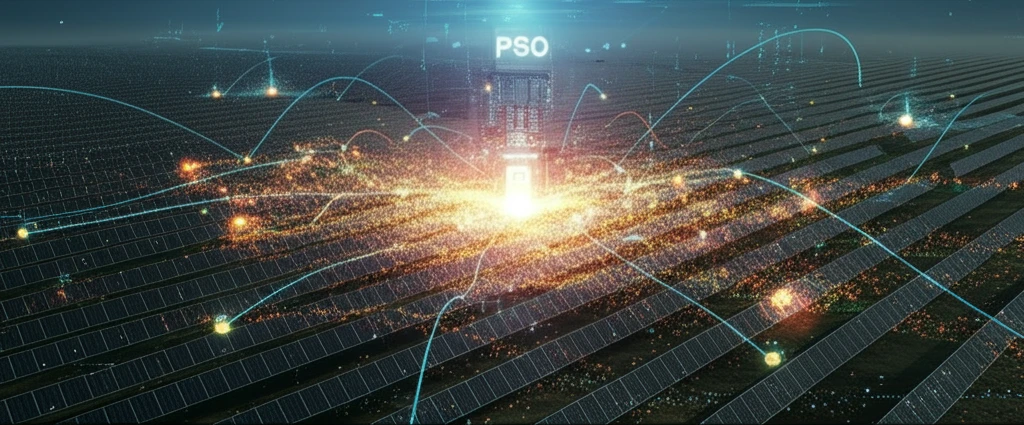
Solar Power Revolution: How Smarter Inverters Are Making Green Energy More Efficient
"Discover how Particle Swarm Optimization (PSO) is refining solar inverter technology, paving the way for enhanced renewable energy solutions."
The relentless surge in energy demand has amplified concerns over the sustainability of current energy sources. With traditional resources dwindling and environmental issues escalating, the quest for renewable energy solutions has never been more critical. Solar power, a clean and abundant alternative, offers a promising path forward, yet it comes with its own set of challenges.
One of the primary hurdles in harnessing solar energy lies in maintaining consistent voltage quality in stand-alone systems. Fluctuations, flickers, and harmonic distortions can compromise the stability of power grids and the performance of connected devices. This is where innovative inverter technology steps in, acting as the linchpin for efficient and reliable solar energy conversion.
This article delves into the cutting-edge realm of solar inverter optimization, spotlighting the use of Particle Swarm Optimization (PSO) to fine-tune controller techniques. We'll explore how these advancements are not just improving energy efficiency but also ensuring a more stable and dependable power supply for homes and businesses alike.
What is Particle Swarm Optimization (PSO) and How Does It Improve Solar Inverters?

Particle Swarm Optimization (PSO) is a computational method inspired by the social behavior of bird flocks or fish schools. Imagine a group of birds searching for food; instead of each bird randomly flying around, they communicate and learn from each other's experiences, quickly converging on the best food source. PSO applies this concept to problem-solving, where each potential solution is a 'particle' that adjusts its 'flying' (adjusting parameters) based on its own successes and the successes of its neighbors.
- Initialization: A group of particles (potential solutions) is created randomly within the possible range of parameter values.
- Evaluation: Each particle's performance is evaluated using a predefined objective function, such as minimizing the error between the desired output voltage and the actual output voltage.
- Update: Particles adjust their positions (parameter values) based on two factors: their own best performance so far (personal best) and the best performance achieved by any particle in the swarm (global best).
- Iteration: This process repeats over several iterations, with particles gradually converging towards the optimal solution.
The Future is Bright: Why Smarter Inverters Matter for Renewable Energy
As the world increasingly turns to renewable energy sources, the role of efficient and reliable solar inverters will only grow in importance. Techniques like Particle Swarm Optimization are at the forefront of this technological evolution, driving improvements that make solar power more accessible and practical for everyday use. By ensuring stable voltage, reducing harmonic distortion, and maximizing energy conversion, these smart inverters are paving the way for a greener, more sustainable future.
